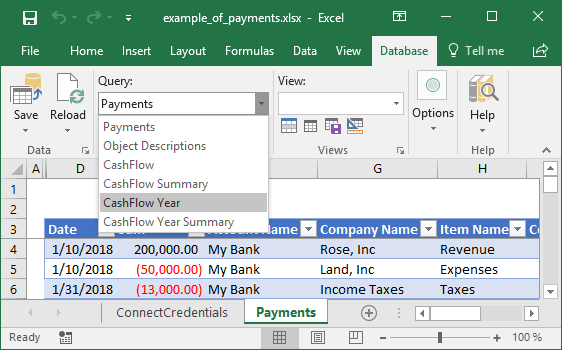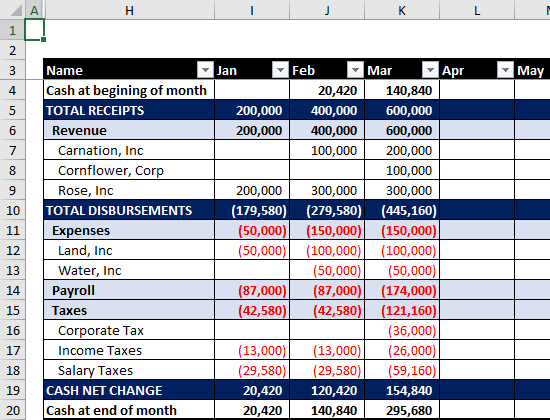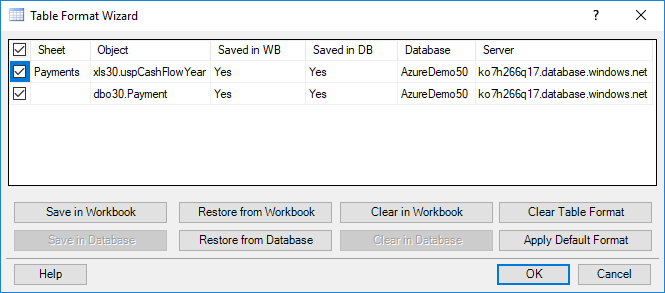Working With Table Formats
Hello,
Today we learn how to get well-formatted reports in Excel from a database.
Let's open our well-known example of payments:
https://www.savetodb.com/downloads/example_of_payments.xlsx (23 KB)
Open the query list and select CashFlow Year:

You will get the report like this:

You can see that the report has hidden columns and conditional formatting.
The add-in loads such formats from a database when you connect for the first time.
You can use Table Format Wizard to manage table formats in a workbook and a database.

For example, you can format a report, save its format to a database, and your colleagues will get it.
You can reload table formats from a database when your colleagues have saved them to a database.
This feature requires SaveToDB Framework installed. We will discuss it in the next letter.
Best regards,
Sergey Vaselenko
CEO | Gartle LLC